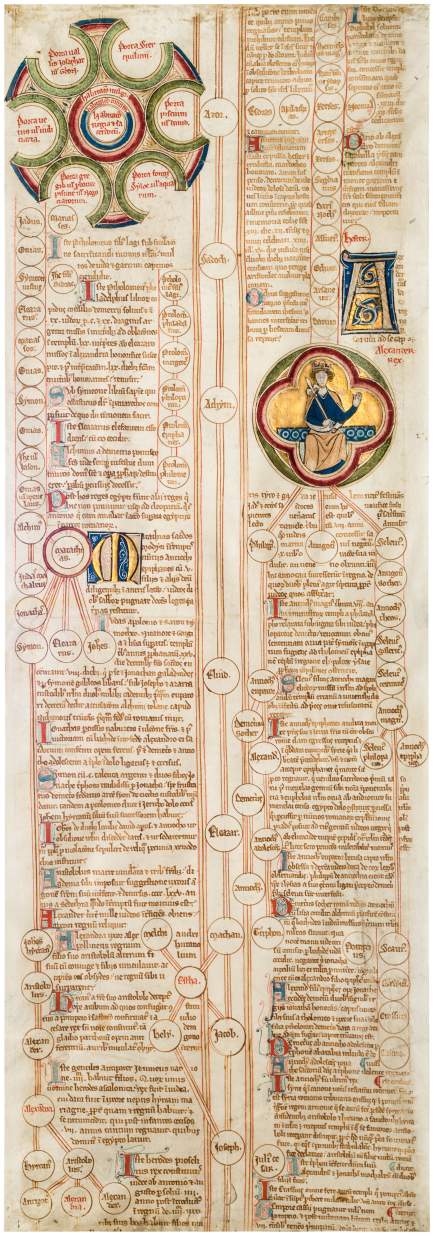


This membrane was part of a larger work composed by Peter of Poitiers (d. 1205) titled Compendium historiae in genealogia Christi. This is an account of the ancestry of Christ and covers the six aetates eras/ages of world history, which is a medieval tradition. The sixth and last of these eras began with the birth of Christ. The preceding five ages are traditionally inaugurated by the Old Testament figures Adam, Noah, Abraham, David, and Zedekiah, considered ancestors of Christ. These periods do not necessarily coincide with the individual membranes of the roll under discussion. The complete roll might have measured about two metres in length and likely consisted of eight membranes stitched together as one continuous unit. The present membrane was presumably leaf 6, constituting part of the fifth era.
The text here begins with a circular diagram of Jerusalem and its six gates – the interior space is inscribed as the living quarter of the king and the priests and then from the centre outwards the living quarter of the king and the priests, that of the nobles, and that of the common people. The six gates are (clockwise from the top): the dung gate, fish gate or David’s gate, gate of the Pool of Siloah, or water gate, sheep gate, or gate close to the ponds, or gate of the merchants, old gate, or judgement gate, gate to the valley Josaphat or Geon. The text than follows with the historical figures Manasses (eldest son of Joseph) and Ptolomaeus. Almost parallel in the second column is the portrait of Alexander rex, the Great, who is depicted as a 13th-century monarch. Hiistory then continues until the Romans Crassus, Pompeius, and Julius Caesar.
The script of this membrane suggests an English origin and seems quite close to that of another roll with the same text dating from c. 1270 or later and illustrated with pen-and-ink drawings in a style that is associated with glass painting of Canterbury Cathedral of the 1220s.
The original scroll was likely taken apart in the early 20th century. The membranes are known to have first been sold separately in 1928 and 1929, possibly the beginning was already damaged at that time and its whereabouts remain unknown.
Read more about this artwork in our Spotlight.



